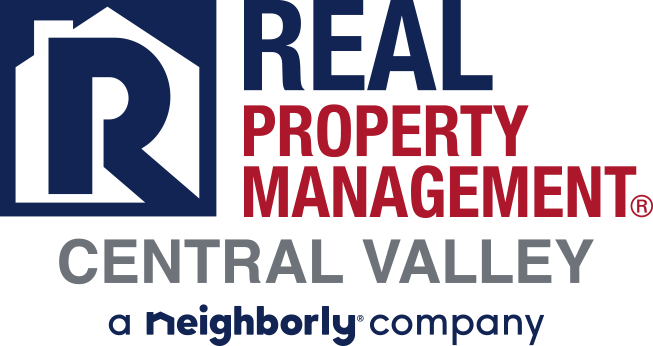2023 Guide to Investing in Multifamily Properties

Investing in multifamily properties can be an incredibly lucrative endeavor, but it is also an extremely complex one. The success of any portfolio lies in the careful research, analysis, and execution of the investment. This comprehensive guide to investing in multifamily properties will provide an in-depth overview of the multifamily market, the investment process, and the potential rewards. You’ll learn the key components of successful multifamily investing, such as market analysis, financing, and market trends. With the right guidance, you can make informed decisions that will set you up for success in the multifamily property market. Whether you are a new or seasoned investor, this guide will help you build a successful portfolio of multifamily investments.
Benefits of Investing in Multifamily Properties
Investing in multifamily properties can have significant financial benefits for both the investor and the tenants who live in those properties. Multifamily properties provide a steady cash flow to investors and are often tax-efficient. Additionally, a growing population and an undersupply of rental housing will likely lead to increased demand and prices for these properties. Investing in multifamily properties can also have social benefits. Multifamily properties are a large part of the solution to affordable housing. By investing in multifamily properties, you can help address the housing shortage and make housing more affordable for those in need.
Market Analysis: Understanding the Multifamily Market
A successful multifamily investment starts with careful market analysis and understanding the overall multifamily market. A key part of this process is understanding the different types of multifamily properties and market segments. There are three primary types of properties: Affordable housing, mid-income housing, and high-end housing. Affordable housing is further broken down into low-income and middle-income housing. Mid-income housing is also known as core housing, and high-end housing is referred to as upscale housing. There are also market segments, which are larger categories that comprise smaller sub-markets. Affordable housing is further broken down into low-income and middle-income housing. Low-income housing is generally found in areas with high poverty rates. Middle-income housing is generally found in areas with lower poverty rates.
Financing Options for Multifamily Properties
There are a variety of financing options for multifamily properties. The type of financing you choose will depend on the type of property you plan to purchase, your credit profile, and your investment strategy. The table below outlines some of the more common financing options for multifamily properties. * Debt-to-Income (DTI) – The amount of debt you can carry is determined by your debt-to-income ratio. This is a critical metric for financing multifamily properties. The higher the DTI, the riskier the loan.
Identifying and Analyzing Potential Multifamily Investments
Identifying and analyzing potential multifamily investments is an important part of the investment process. Before you can decide whether a property is a good investment, you must understand the local multifamily market. You can begin your analysis by reviewing the most recent data on the market, including recent vacancy rates, gross rental yields, and average rental rates. You can also review local economic indicators, such as employment and income growth, to get a better understanding of the market. You should also conduct a comparative analysis to determine if the property is a good investment. Comparing the property to other properties in the market will allow you to get a better idea of the property’s potential. You can compare the property to similar properties in the market, similar properties in the same sub-market, or an index.
Market Trends
As the market is currently experiencing a multifamily shortage, there are a few key trends to consider when investing in multifamily properties. – Growing Demand for Rental Housing: A growing population and lack of new construction will likely lead to increased demand for rental housing in the near future. This will lead to higher rental prices and higher potential returns on rental investments. – Increase in Household Incomes: As the economy continues to improve, household incomes are expected to grow. This will likely lead to an increase in renters and rental demand. – Increase in Retirement Housing: As the population ages, there will be an increase in retirement housing, also known as age-restricted housing. This type of multifamily housing is generally higher end and will likely see an increase in demand. – Increase in Student Housing: As the student population increases, there will be an increase in student housing. Student housing is generally regulated by the state and is typically low-income housing. – Decrease in Homeownership: The homeownership rate is expected to decrease in the near future as millennials experience more economic challenges. This will likely lead to an increase in the demand for rental housing.
Strategies for Successful Multifamily Investing
There are a number of strategies that will help you achieve success in the multifamily market. – Conduct Thorough Due Diligence: Before you purchase any property, you should conduct thorough due diligence. This will help you better understand the property and will allow you to identify any issues or red flags that may be present. You can also use this information to negotiate a better price. – Be Flexible with Your Investment Strategy: Be flexible with your investment strategy and be open to different types of properties. You may want to start by investing in core housing, but you may want to transition to upscale housing as the market continues to grow. – Be Careful with Your Capital: Be careful with your capital, and try to minimize the amount of debt you take on. You should also try to use leverage, such as mortgages, to increase your return on investment. – Invest in What You Know: You should invest in what you know. You should know the local area, the housing market, and the best ways to manage the property. This will help you make better decisions regarding the property and will help you minimize risk.
Tax Implications
Investing in multifamily properties can be an incredibly lucrative endeavor, but it’s important to be mindful of the tax implications of your investment. While the details of your specific situation will determine the exact tax implications, there are a few general rules to keep in mind. – Rents are Taxable: The revenue from your rental properties will be taxable as ordinary income, regardless of how you are financing your properties. You should also keep in mind that rents are generally subject to withholding taxes. – Interest is Taxable: You will also be taxed on any interest you pay on any debt you use to finance your properties. You may also be subject to the alternative minimum tax (AMT) if you have a lot of interest income. – Taxes on Sale: If you sell your properties at a profit, you will likely owe taxes on your gains. Depending on your overall income, the type of property, and how long you held the property, you may be subject to capital gains taxes.
Summary and Conclusion
Investing in multifamily properties can be an incredibly lucrative endeavor, but it is also an extremely complex one. The success of any portfolio lies in the careful research, analysis, and execution of the investment. This comprehensive guide to investing in multifamily properties will provide an in-depth overview of the multifamily market, the investment process, and the potential rewards. You’ll learn the key components of successful multifamily investing, such as market analysis, financing, and market trends. With the right guidance, you can make informed decisions that will set you up for success in the multifamily property market.
Contact Us
For more information about the property management services we can offer you, contact us today by calling (209) 572-2222 or click here to connect with us online.
